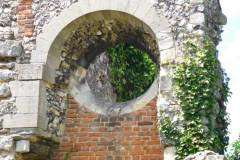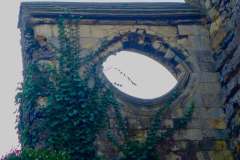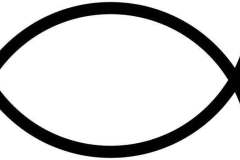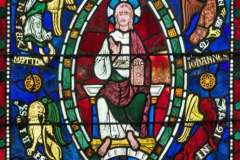Description
A vesica shape results from the overlap of two circles. It has been described as “an oval with pointed ends”. The word vesica is derived from the Latin term for the bladder of a fish – they share the same shape! Despite this, the vesica shape played an important role in the development of early Christian architecture, symbolism, painting, stained glass, etc. Our attention was initially taken by one vesica window in the cathedral precincts (near Chillenden chambers). It originally provided light above the first floor corridor that led to the monks’ necessarium (toilets). The emblem of the fish representing early Christianity (Image 3) is also based on the vesica shape (known as vesica piscis) – there must surely be local examples but we have yet to spot them.
We have, however, noted the vesica in the stained glass of the Corona (Image 4). Several other stained glass examples represent near misses (Images 5 and 6). In Image 5 the pure vesica shape is distorted to accommodate the ‘tree of Jesse’; in Image 6 the glass has been cut to fit a new window location. Two modern versions of medieval glass (Images 7 and 8) include good representations of the vesica shape – they are based on the Canterbury corona windows, and have been commissioned by a church in Dallas USA. In addition, painted frescoes on the ceiling of the Gabriel chapel in the cathedral crypt (Images 9 and 10) clearly show a further example of the vesica shape. Image 11 shows use of the vesica shape surrounding Christ on murals in Eastbridge Hospital. Finally, we show a vesica example from the Beaney Museum (Image 12).
Local examples (click to enlarge and read captions)




